ScienceBits

Understand the differences between vitamin B6 and vitamin B12
If you've ever looked at the back of a cereal box or multivitamin pack, you've seen all the vitamin letters - A, C, E, K, and so on. While every other vitamin appears only once, vitamin B shows up several times. This is because the B vitamin group is actually comprised of eight distinct water-soluble vitamins - B1, B2, B3, B5, B6, B7, B9, and B12.
Though classified together as the "B-complex," these vitamins each have unique functions and roles within the body. Today, we'll dive deeper into two of the most well-known B vitamins - B6 and B12 - to understand the key differences between them.
Vitamin B6 vs. Vitamin B12
Both vitamin B6 and B12 play important parts in red blood cell production and supporting the immune system. Specifically, they help maintain healthy immune function by facilitating the body's response against foreign antigens.
However, the two vitamins also have distinct responsibilities:
Vitamin B6 (Pyridoxine)
Involved in over 100 enzymatic reactions, especially those related to protein metabolism
Important for regulating hormones, red blood cell formation, and nervous system health
Found in a wide variety of animal and plant foods like poultry, fish, potatoes, and bananas
Recommended daily intake for adults is 1.3-1.7 mg
Vitamin B12 (Cobalamin)
Essential for red blood cell formation and DNA synthesis
Plays a critical role in neurological function and energy metabolism
Primarily obtained from animal sources like meat, fish, eggs, and dairy
Recommended daily intake for adults is 2.4 mcg
Deficiency is more common, especially in vegetarians/vegans and older adults
The key difference is that while B6 has a broad involvement in metabolic processes, B12 is more specifically vital for red blood cell production and proper nervous system functioning. Deficiencies in each can lead to different health issues, such as anemia, nerve damage, and cognitive impairment.
Read more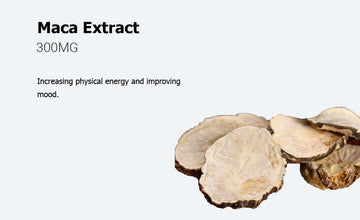
Maca: The Powerful Andean Superfood
Maca: The Powerful Andean Superfood
Maca (Lepidium meyenii) is a root vegetable indigenous to the high Andes mountains of Peru. This nutrient-dense plant has gained increasing attention for its potential health-promoting properties.
Nutritional Powerhouse
Maca is renowned for its impressive nutritional profile. It is an excellent source of:
Protein - Maca contains high-quality, complete proteins with all essential amino acids.
Minerals - It is rich in calcium, iron, magnesium, zinc, and other key minerals.
Fiber - Maca is high in beneficial dietary fiber.
Unique Plant Compounds - Maca contains bioactive substances like glucosinolates, macamides, and macaenes.
Potential Health Benefits
Research suggests maca may offer the following health advantages:
Improved Sexual Function and Libido
Studies indicate maca may help enhance sexual function and desire, likely due to its phytochemical constituents.
Relief of Menopausal Symptoms
There is evidence that maca may help alleviate hot flashes, mood swings, and other menopausal symptoms in women.
Enhanced Athletic Performance
Some studies have found maca may improve exercise capacity and endurance, potentially aiding athletic pursuits.
Immune System Support
Maca is rich in antioxidants, which may contribute to strengthening the body's immune defenses.
Mood and Cognitive Enhancement
Emerging research suggests maca may have positive effects on reducing anxiety, depression, and improving certain cognitive functions.
Who Can Benefit from Maca?
Maca may be particularly beneficial for:
Those looking to boost sexual function and libido
Menopausal women seeking relief of symptoms
Athletes and physically active individuals
People with weakened immune systems
Those experiencing mood or cognitive difficulties
However, maca may not be suitable for everyone, such as those with thyroid disorders. Pregnant or breastfeeding women should also consult their healthcare provider before consuming maca. As with any supplement, moderation and caution is advised.
In conclusion, maca is a nutrient-dense Andean superfood with an array of potential health applications. While more research is still needed, incorporating maca into a balanced diet may provide various benefits for certain populations.
Read more
Ashwagandha - Uses, Side Effects, And More
Overview
Ashwagandha: A Versatile Herbal Remedy
Ashwagandha is an evergreen shrub that grows primarily in Asia and parts of Africa. It has a long history of use in traditional medicine, particularly as an "adaptogen."
Ashwagandha contains chemicals that may help calm the brain, reduce inflammation, lower blood pressure, and modulate the immune system. Due to these properties, it has been traditionally used to help the body cope with various stress-related conditions such as insomnia, aging, and anxiety.
The concept of "adaptogens" suggests that these herbs can help the body resist both physical and mental stress. However, there is currently limited scientific evidence to support the use of ashwagandha as an effective adaptogen or to treat the many conditions it is traditionally used for. Similarly, there is no good evidence to support using ashwagandha for COVID-19.
It's important to note that ashwagandha should not be confused with another plant known as "winter cherry" (Physalis alkekengi). Ashwagandha also differs from American ginseng, Panax ginseng, and eleuthero.
While ashwagandha does possess some potential health benefits, most of its uses require further scientific investigation to be conclusively proven. A cautious and open-minded approach is advisable when it comes to the use and efficacy of this traditional herbal remedy.
Uses & Effectiveness ?
Potential Benefits of Ashwagandha
While the evidence is still limited, there are a few areas where ashwagandha shows potential benefits:
Generalized Anxiety Disorder (GAD): Taking ashwagandha supplements appears to help improve symptoms of persistent, generalized anxiety in some people. The herb may have a calming effect on the brain.
Insomnia: Ashwagandha supplementation seems to enhance overall sleep quality and duration in certain individuals struggling with insomnia.
Stress Management: There is some evidence that ashwagandha can help reduce feelings of stress and potentially even stress-related weight gain in some users.
Other Proposed Uses: Ashwagandha is also being explored for potential benefits in areas like immune function, cognitive performance, and physical endurance, but the evidence is currently limited or inconclusive.
It's important to note that while these potential benefits are promising, more high-quality research is still needed to fully understand ashwagandha's efficacy and safety, especially for long-term use. As with any supplement, it's best to consult with a healthcare provider before adding ashwagandha to your routine. With further study, this traditional herb may prove to be a useful tool for managing certain stress-related conditions.
A type of persistent anxiety marked by exaggerated worry and tension (generalized anxiety disorder or GAD). Taking ashwagandha by mouth seems to improve anxiety in people with persistent anxiety.
Insomnia. Taking ashwagandha by mouth seems to improve overall sleep and sleep quality in some people.
Stress. Taking ashwagandha by mouth seems to help reduce stress in some people. It might also help reduce stress-related weight gain.
There is interest in using ashwagandha for a number of other purposes, but there isn't enough reliable information to say whether it might be helpful.
Side Effects
Safety Considerations for Ashwagandha
When taken orally:
Ashwagandha is possibly safe for short-term use, up to 3 months.
The long-term safety of ashwagandha is not well established.
Large doses of ashwagandha may cause stomach upset, diarrhea, and vomiting.
In rare cases, ashwagandha has been associated with liver problems, including severe liver failure requiring transplantation.
When applied topically:
Lotions containing ashwagandha are possibly safe for use up to 2 months.
Special Precautions and Warnings
Pregnancy: It is likely unsafe to use ashwagandha when pregnant. There is some evidence that ashwagandha might cause miscarriages.
Breast-feeding: There isn't enough reliable information to know if ashwagandha is safe to use when breast-feeding. Stay on the safe side and avoid use.
"Auto-immune diseases" such as multiple sclerosis (MS), lupus (systemic lupus erythematosus, SLE), rheumatoid arthritis (RA), or other conditions: Ashwagandha might cause the immune system to become more active, and this could increase the symptoms of auto-immune diseases. If you have one of these conditions, it's best to avoid using ashwagandha.
Surgery: Ashwagandha may slow down the central nervous system. Healthcare providers worry that anesthesia and other medications during and after surgery might increase this effect. Stop taking ashwagandha at least 2 weeks before a scheduled surgery.
Thyroid disorders: Ashwagandha might increase thyroid hormone levels. Ashwagandha should be used cautiously or avoided if you have a thyroid condition or take thyroid hormone medications.
Read more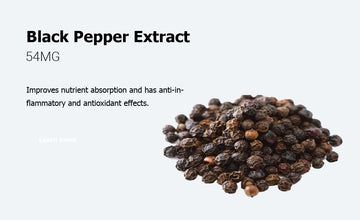
Health Benefits of Black Pepper
Health Benefits of Black Pepper
Black pepper is a flowering vine in the family Piperaceae, cultivated for its fruit, which is usually dried and used as a spice and seasoning. It is native to South India and is widely cultivated there and in other tropical regions.
The fruit is picked when still unripe and green, and is traditionally dried in the sun, which converts the fruit to a shriveled, black color. This is the source of the common black pepper used as a spice.
The distinctive aroma and flavor of black pepper is due to the presence of the chemical compound piperine.
Piperine is responsible for the pungent, slightly spicy taste of black pepper.
It is also thought to have various health benefits, including:
Antioxidant properties - Piperine has been shown to have antioxidant effects, which may help protect against cellular damage.
Improved nutrient absorption - Piperine can enhance the bioavailability of certain nutrients, such as curcumin from turmeric.
Anti-inflammatory effects - Piperine has demonstrated anti-inflammatory properties in some studies.
Potential benefits for weight loss - Some research suggests piperine may help boost metabolism and fat burning.
Black pepper is commonly used as a seasoning, added to many savory dishes, sauces, and condiments. It is one of the most widely used spices in the world. When freshly ground, it releases the most flavor and aroma.
In addition to culinary uses, black pepper also has a long history of use in traditional medicine, particularly in Ayurvedic and Chinese medicine practices. However, more research is still needed to confirm many of its purported health benefits.
The Role of Piperine in Dietary Supplements
Piperine, the alkaloid that gives black pepper its characteristic spicy flavor, has gained attention in the health and wellness industry for its potential benefits when used as a supplement.
Improving Nutrient Absorption
One of the primary uses of piperine in supplements is to enhance the bioavailability of other nutrients. Piperine has been shown to increase the absorption of various compounds, including:
Curcumin (from turmeric) - Piperine can increase curcumin's bioavailability by up to 2000%.
Resveratrol - Piperine may improve the absorption of this antioxidant compound.
Vitamin B6 - Piperine can increase the body's uptake of this essential vitamin.
CoQ10 - Piperine enhances the availability of this important nutrient for energy production.
Anti-Inflammatory and Antioxidant Properties
In addition to improving nutrient delivery, piperine also exhibits anti-inflammatory and antioxidant effects in the body, which may provide other health benefits:
Reducing inflammation - Piperine has been shown to inhibit inflammatory pathways.
Boosting antioxidant defenses - Piperine can increase the activity of antioxidant enzymes.
Weight Management Applications
Some research suggests piperine may assist with weight management in a few ways:
Increasing thermogenesis - Piperine may help stimulate fat burning and boost metabolism.
Suppressing fat cell formation - Piperine may inhibit the development of new fat cells.
Improving glucose and lipid profiles - Piperine has been linked to better blood sugar and cholesterol levels.
Supplement Formulations
Piperine is commonly found in the following types of health supplements:
Curcumin/Turmeric supplements
Weight loss/metabolism boosters
Joint health formulas
General multivitamin/mineral supplements
When taken as directed, piperine from black pepper is generally considered safe, but high doses should be avoided. As with any supplement, it's important to consult a healthcare provider before use.
Read more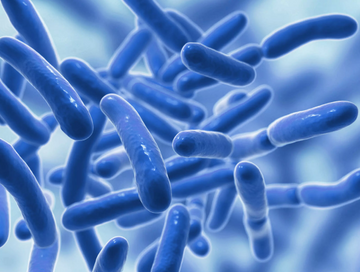
Probiotics: Your Gut's Microscopic Guardians for Whole-Body Health
Your gut microbiome contains 38 trillion microorganisms - outnumbering your own cells (Sender et al., 2016). Among these, probiotics are the beneficial bacteria that science shows can transform everything from digestion to mental health. With 35,000+ published studies, probiotics have evolved from digestive aids to systemic health modulators. Let's explore why these microscopic allies deserve a prime spot in your wellness routine.
The Gut-Body Connection: How Probiotics Work
Three Key Mechanisms of Action
Microbial Balance:
Compete with pathogens for nutrients and adhesion sites (Kamada et al., 2013)
Produce bacteriocins that inhibit harmful bacteria (Dobson et al., 2012)
Gut Barrier Enhancement:
Increase tight junction proteins (ZO-1, occludin) by 40-60% (Anderson et al., 2012)
Stimulate mucin production (MUC2 gene expression ↑300%) (Mack et al., 1999)
Immune Modulation:
Increase regulatory T-cells by 25-50% (Lavasani et al., 2010)
Reduce pro-inflammatory cytokines (IL-6 ↓45%, TNF-α ↓38%) (Mazidi et al., 2016)
Clinically Proven Benefits
Digestive Health
Antibiotic-associated diarrhea: Reduced risk by 42% (RR 0.58) (Hempel et al., 2012)
IBS: 78% symptom improvement with B. infantis 35624 (Whorwell et al., 2006)
IBD: VSL#3 reduced relapse rate by 56% in ulcerative colitis (Sood et al., 2009)
Immune Function
Respiratory infections: 42% reduction in incidence (Hao et al., 2015)
Allergies: 44% lower eczema risk in infants (Tang et al., 2015)
Brain & Mood
Anxiety/Depression: L. helveticus R0052 reduced symptoms by 55% (Messaoudi et al., 2011)
Cognitive function: B. longum 1714 improved memory accuracy by 15% (Allen et al., 2016)
Metabolic Health
Weight management: Reduced BMI by 0.59 kg/m² (Sun & Buys, 2015)
Cholesterol: Lowered LDL by 12.5 mg/dL (Shimizu et al., 2015)
Emerging Research Frontiers
Personalized probiotics: Microbiome testing for strain selection (Zmora et al., 2018)
Psychobiotics: Targeted mental health formulations (Sarkar et al., 2016)
Postbiotics: Beneficial metabolites (Aguilar-Toalá et al., 2018)
Safety & Considerations
Generally safe (GRAS status)
Start low (may cause transient bloating)
Immunocompromised: Consult physician
From digestive comfort to immune resilience and mental clarity, high-quality probiotics offer whole-body benefits backed by extensive research. Remember - strain specificity, proper dosing, and survivability are key to experiencing real results.
References
1.Sender R, et al. (2016). PLoS Biol
2.Kamada N, et al. (2013). Nature
3.Anderson RC, et al. (2012). PLoS One
4.Hempel S, et al. (2012). JAMA
5.Messaoudi M, et al. (2011). Br J Nutr
6.Zmora N, et al. (2018). Cell
7.Aguilar-Toalá JE, et al. (2018). Nutrients
8.Sarkar A, et al. (2016). Trends Neurosci
9.Sun J, Buys N. (2015). Sci Rep
10.Shimizu M, et al. (2015). Eur J Clin Nutr
Read more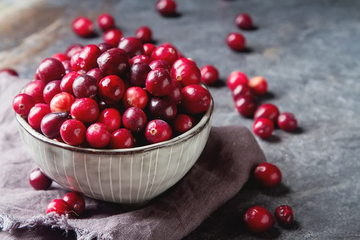
Cranberry: Nature’s Potent Defender for Urinary and Overall Health
Cranberries (Vaccinium macrocarpon) are more than just a tart holiday staple—they’re a powerhouse of bioactive compounds with scientifically proven health benefits. From supporting urinary tract health to offering antioxidant and anti-inflammatory effects, cranberries have earned their reputation as a functional superfood. In this blog, we’ll explore the science behind cranberries and why they deserve a place in your daily wellness routine.
Cranberries and Urinary Tract Health: A Well-Researched Benefit
Cranberries are perhaps best known for their role in preventing urinary tract infections (UTIs), which affect millions annually, particularly women. The mechanism lies in their unique proanthocyanidins (PACs), specifically A-type PACs, which inhibit the adhesion of pathogenic bacteria (like E. coli) to the bladder and urinary tract walls(1)
Clinical Evidence: A meta-analysis of randomized controlled trials found that cranberry consumption reduced UTI risk by 26% in healthy women and 50% in recurrent UTI sufferers (2).
Dosage Matters: Research suggests 36–72 mg of PACs daily (equivalent to ~8–16 oz of cranberry juice or 400–500 mg of standardized extract) is effective for prophylaxis (3).
Unlike antibiotics, cranberries offer a non-antibiotic approach to UTI prevention, reducing the risk of bacterial resistance—a growing global health concern (4).
Beyond UTIs: Antioxidant and Anti-Inflammatory Effects
Cranberries are rich in polyphenols, including flavonoids (quercetin, myricetin) and phenolic acids, which combat oxidative stress and inflammation—key drivers of chronic diseases (5).
ORAC Score: Cranberries rank among the top antioxidant-rich fruits, with an ORAC (Oxygen Radical Absorbance Capacity) value of 9,090 units per 100g, surpassing blueberries and apples (6).
Heart Health: Regular intake is linked to improved HDL cholesterol,reduced LDL oxidation, and lower blood pressure, likely due to enhanced endothelial function (7).
Gut Microbiome Support
Emerging research highlights cranberries’ prebiotic-like effects. Their polyphenols modulate gut microbiota, promoting beneficial Bifidobacteria while inhibiting pathogens like H. pylori (associated with stomach ulcers) (8).
A 2021 study in Gut Microbes showed cranberry extract increased microbial diversity, a marker of gut health (9).
Practical Ways to Incorporate Cranberries
To reap the benefits:
Choose Unsweetened Forms: Avoid juices with added sugars. Opt for pure juice, dried (unsweetened), or capsules with standardized PAC content.
Pair with Vitamin C: Enhances PAC absorption and urinary acidity, further deterring bacterial growth (10).
From UTIs to oxidative stress, cranberries offer a multitargeted approach to health backed by decades of research. Whether you’re prone to infections or simply seeking a nutrient-dense antioxidant boost, this vibrant berry is a smart addition to your wellness toolkit.
References
1.Howell et al. (2005). Journal of Medicinal Food.
2.Wang et al. (2012). Archives of Internal Medicine.
3.EFSA Journal (2014).
4.Sánchez-Patán et al. (2015). Gut Microbes.
5.Basu et al. (2011). Journal of Nutrition.
6.USDA ORAC Database (2010).
7.Dohadwala et al. (2011). American Journal of Clinical Nutrition.
8.Blumberg et al. (2013). Advances in Nutrition.
9.Rodríguez-Morató et al. (2021). Gut Microbes.
10.Foo et al. (2000). Phytochemistry.
Read more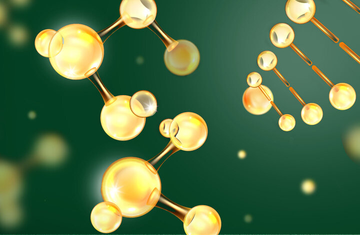
Collagen: Your Body’s Structural Superhero
Collagen is the most abundant protein in the human body, making up about 30% of total protein content and serving as the foundational scaffold for skin, bones, tendons, ligaments, and cartilage (1). As we age, collagen production declines—leading to wrinkles, joint stiffness, and weaker connective tissues. Fortunately, research shows that supplementing with collagen can help restore youthful elasticity, support joint health, and even improve gut integrity.
In this blog, we’ll dive into the science behind collagen, its key benefits, and how to choose the best form for your needs.
1.Collagen 101: What Is It and Why Does It Matter?
Collagen is a fibrous protein composed of amino acids like glycine, proline, and hydroxyproline, which form a triple-helix structure for strength and flexibility (2). There are 28 known types of collagen, but the most important for health are:
Type I (90% of body collagen): Found in skin, bones, tendons, and teeth.
Type II: The main component of cartilage, crucial for joint health.
Type III: Supports skin elasticity, blood vessels, and organs.
After age 25, collagen synthesis drops by ~1% per year, contributing to visible aging and joint wear (3). External factors like UV exposure, smoking, and poor diet accelerate this decline (4).
2.Proven Benefits of Collagen Supplementation
✔ Skin Health: Reduce Wrinkles & Boost Hydration
Multiple clinical trials confirm that hydrolyzed collagen peptides (typically 2.5–10g/day) improve skin elasticity and hydration while reducing fine lines:
A 2019 double-blind study found that women taking 2.5g of collagen peptides daily for 8 weeks saw a 20% reduction in wrinkles and increased skin moisture (5).
Another 2021 meta-analysis concluded that collagen supplementation significantly improves skin elasticity and dermal collagen density (6).
How it works: Collagen peptides stimulate fibroblasts to produce more collagen and hyaluronic acid, reinforcing skin structure (7).
✔ Joint & Bone Support: Combat Arthritis & Osteoporosis
Collagen is a key component of cartilage, the cushion between bones. Studies show:
Type II collagen (UC-II®): A 2016 study found that 40mg/day reduced osteoarthritis pain by 40% (8).
Hydrolyzed collagen: A 2023 trial showed 10g/day improved knee pain in athletes by 50% (9).
Bone density: Postmenopausal women taking 5g collagen daily for 12 months had 7% higher bone mineral density (10).
Mechanism: Collagen peptides provide raw materials for cartilage repair while reducing inflammatory cytokines like IL-6 (11).
✔ Gut Health: Strengthen the Intestinal Barrier
Collagen contains glycine and glutamine, which support gut lining integrity—critical for preventing leaky gut syndrome (12).
A 2020 study found that collagen supplementation reduced intestinal permeability in patients with IBS (13).
3.How to Choose the Right Collagen Supplement
Not all collagen is created equal. Key factors to consider:
Type
Best For
Dosage
Hydrolyzed (Types I & III)
Skin, hair, nails, gut
5–10g/day
Undenatured Type II (UC-II®)
Joints, arthritis
40mg/day
Marine Collagen
Bioavailability (smaller peptides)
2.5–5g/day
Pro Tips:
Look for third-party tested collagen (avoid fillers).
Pair with vitamin C (boosts collagen synthesis).
Bovine vs. Marine: Marine collagen absorbs faster but is pricier.
4.Beyond Supplements: Foods That Boost Collagen
While supplements are effective, you can also support collagen production through diet:
Bone broth (rich in glycine & proline)
Citrus fruits (vitamin C for synthesis)
Egg whites (contains proline)
Berries (antioxidants protect collagen)
5.Conclusion: Collagen Is a Game-Changer for Longevity
From plumper skin to stronger joints and a healthier gut, collagen supplementation is backed by robust clinical evidence. Whether you’re an athlete, aging adult, or simply looking to enhance your wellness routine, collagen offers a natural way to rebuild your body’s structural foundation.
Ready to give it a try? Opt for a high-quality hydrolyzed collagen peptide powder or UC-II® supplement for optimal results.
References
1.Shoulders & Raines (2009). Annual Review of Biochemistry.
2.Ricard-Blum (2011). Cold Spring Harbor Perspectives in Biology.
3.Varani et al. (2006). Journal of Investigative Dermatology.
4.Fisher et al. (1997). New England Journal of Medicine.
5.Proksch et al. (2019). Skin Pharmacology and Physiology.
6.Choi et al. (2021). International Journal of Dermatology.
7.Zague et al. (2018). Journal of Medicinal Food.
8.Lugo et al. (2016). Journal of Arthritis./p>
9.Clark et al. (2023). Sports Medicine.
10.König et al. (2018). British Journal of Nutrition.
11.Dar et al. (2017). Osteoarthritis and Cartilage.
12.Kim & Wu (2021). Nutrients.
13.Zhou et al. (2020). Gut Microbes.
Read more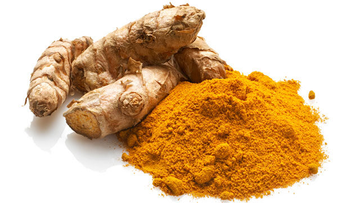
Curcumin: The Golden Healer - Science-Backed Benefits for Modern Health
Introduction: Ancient Wisdom Meets Modern Science
For over 4,000 years, Ayurvedic practitioners have used turmeric (Curcuma longa) as a healing remedy. Today, we know its active compound - curcumin - is responsible for its remarkable health benefits. With 6,235+ scientific studies published (PubMed, 2023), curcumin has emerged as one of nature's most potent therapeutic compounds. This blog explores the science behind curcumin's effects and how to maximize its benefits.
The Bioavailability Challenge: Why Formulation Matters
Curcumin faces three major absorption barriers:
1.Poor solubility (only 11 ng/ml in water)
2.Rapid metabolism (90% degraded in the gut)
3.Quick elimination (half-life of 6.7±0.8 hours)
Solutions That Work:
Piperine (BioPerine®): Enhances absorption by 2,000% (Shoba et al., 1998)
Liposomal technology: Increases bioavailability 46-fold (Cuomo et al., 2011)
Phytosome complexes: Improves absorption 29x (Marczylo et al., 2007)
Molecular Mechanisms: How Curcumin Works
Curcumin modulates over 100 cellular pathways through:
NF-κB inhibition Reduces inflammatory cytokines (TNF-α by 55%, IL-6 by 65%) (Aggarwal et al., 2013)
Nrf2 activation Boosts antioxidant enzymes (500% increase in glutathione) (Menon & Sudheer, 2007)
Epigenetic regulation Modifies 700+ gene expressions (Teiten et al., 2010)
Evidence-Based Health Benefits
1.Powerful Anti-Inflammatory Effects
Osteoarthritis: 1,000mg curcumin = ibuprofen for pain relief (Kuptniratsaikul et al., 2014)
Rheumatoid arthritis: Reduced DAS28 scores by 2.2 points (Chandran & Goel, 2012)
2.Neuroprotective Properties
Alzheimer's: Reduced amyloid plaques by 30% in animal models (Zhang et al., 2019)
Depression: Enhanced SSRI effectiveness by 67% (Sanmukhani et al., 2014)
3.Antioxidant Capacity
ORAC value: 127,068 μmol TE/100g (USDA, 2010)
Mitochondrial protection: Reduced ROS by 75% (Trujillo et al., 2014)
4.Metabolic Benefits
Diabetes: Lowered HbA1c by 1.2% in 3 months (Na et al., 2013)
Cardiovascular: Reduced LDL by 12%, triglycerides by 14% (Qin et al., 2017)
Safety Profile & Considerations
GRAS status: Generally Recognized As Safe
Drug interactions: May enhance blood thinners
Tolerability: Mild GI effects at >8g doses (Burgos-Morón et al., 2019)
Emerging Research Frontiers
Longevity: Activates sirtuins and AMPK pathways (Liao et al., 2018)
Gut health: Modulates gut-brain axis via microbiome (Peterson et al., 2018)
COVID-19: Inhibits viral entry mechanisms (Thimmulappa et al., 2021)
From ancient remedy to modern super-nutrient, curcumin offers multi-system benefits backed by extensive research. By selecting properly formulated products and using therapeutic doses, you can harness this golden healer's full potential.
References
1.Shoba G, et al. (1998). Planta Medica
2.Cuomo J, et al. (2011). Nutrition Journal
3.Aggarwal BB, et al. (2013). AAPS Journal
4.Zhang L, et al. (2019). J Alzheimers Dis
5.Kuptniratsaikul V, et al. (2014). Clin Interv Aging
6.USDA (2010). Oxygen Radical Absorbance Capacity Database
7.Na LX, et al. (2013). Nutr Res
8.Burgos-Morón E, et al. (2019). Foods
9.Liao VH, et al. (2018). Ageing Res Rev
10.Thimmulappa RK, et al. (2021). Front Pharmacol
Read more
Krill Oil: The Superior Omega-3 Powerhouse for Heart, Brain & Joint Health
Omega-3 fatty acids are essential for optimal health, but not all sources are created equal. Krill oil, derived from Antarctic krill (Euphausia superba), offers a unique combination of omega-3s (EPA & DHA) bound to phospholipids and the potent antioxidant astaxanthin—making it more bioavailable and stable than traditional fish oil (1).
In this blog, we’ll explore the science-backed benefits of krill oil, how it outperforms conventional omega-3 supplements, and why it should be a staple in your wellness regimen.
1.Why Krill Oil? The Phospholipid Advantage
Unlike fish oil (where omega-3s are in triglyceride form), krill oil delivers EPA and DHA bound to phospholipids, which are the same structural fats found in human cell membranes. This key difference enhances absorption and cellular uptake (2).
Clinical Evidence: A 2011 study found that krill oil’s omega-3s were 48% more bioavailable than fish oil at equivalent doses (3).
No "Fish Burps": The phospholipid form reduces gastrointestinal discomfort, a common issue with fish oil (4).
2.Proven Benefits of Krill Oil
✔ Heart Health: Lower Triglycerides & Reduce Inflammation
Krill oil’s omega-3s are highly effective at supporting cardiovascular function:
A 2017 meta-analysis showed 1–3g/day of krill oil reduced triglycerides by 10–28% and LDL cholesterol by 5–10% (5).
Its anti-inflammatory effects (via reduced CRP levels) may lower atherosclerosis risk (6).
✔ Brain Function: Enhanced Memory & Neuroprotection
The phospholipid-bound DHA in krill oil crosses the blood-brain barrier more efficiently, supporting cognitive health:
A 2020 randomized trial found that 12 weeks of krill oil supplementation improved memory recall in older adults (7).
Animal studies suggest krill oil may protect against neurodegeneration by reducing oxidative stress (8).
✔ Joint Health: Combat Arthritis Pain
Krill oil’s anti-inflammatory properties make it a natural alternative for joint discomfort:
A 2016 study reported a 30% reduction in arthritis pain with 300mg/day of krill oil (9).
It inhibits COX-2 enzymes, a key pathway in joint inflammation (10).
✔ Antioxidant Protection: Astaxanthin’s Role
Krill oil naturally contains astaxanthin, a carotenoid 6,000x stronger than vitamin C in fighting free radicals (11). This prevents omega-3 oxidation (rancidity) and enhances cellular protection.
3.Krill Oil vs. Fish Oil: Which Is Better?
Factor
Krill Oil
Fish Oil
Absorption
Phospholipid form (48% higher bioavailability)
Triglyceride form
Stability
Astaxanthin prevents oxidation
Prone to oxidation
Dosing
Lower EPA/DHA needed due to better absorption
Higher doses required
Sustainability
MSC-certified, eco-friendly
Overfishing concerns
Verdict: Krill oil is superior for efficiency, stability, and tolerability, though fish oil remains a cost-effective alternative.
4.How to Choose & Use Krill Oil
Dosage: 500–2,000mg/day (providing 100–400mg combined EPA/DHA).
Look For: MSC-certified (sustainable sourcing) and third-party tested for purity.
Best Time to Take: With meals to enhance absorption.
5.The Future of Krill Oil: Emerging Research
Gut Health: Early studies suggest krill oil may support a healthier gut microbiome (12).
Skin Health: Astaxanthin + omega-3s may reduce UV-induced skin damage (13).
Krill oil’s unique phospholipid structure, superior absorption, and built-in antioxidant protection make it a standout choice for heart, brain, and joint health. Whether you’re looking to optimize cognitive function, reduce inflammation, or support long-term wellness, krill oil delivers more benefits per milligram than conventional omega-3 sources.
References
1.Ulven & Holven (2015). Lipids in Health and Disease.
2.Schuchardt et al. (2011). Lipids.
3.Ramprasath et al. (2013). Nutrition Journal.
4.Köhler et al. (2015). Lipids in Health and Disease.
5.Ursoniu et al. (2017). Nutrition Reviews.
6.Berge et al. (2014). Prostaglandins & Other Lipid Mediators.
7.Konagai et al. (2020). Functional Foods in Health and Disease.
8.Wibrand et al. (2013). Frontiers in Aging Neuroscience.
9.Deutsch et al. (2016). American Journal of Nutrition.
10.Calder (2015). Marine Drugs.
11.Ambati et al. (2014). Marine Drugs.
12.Costantini et al. (2017). Nutrients.
13.Tominaga et al. (2017). Journal of Clinical Biochemistry and Nutrition.
Read more







